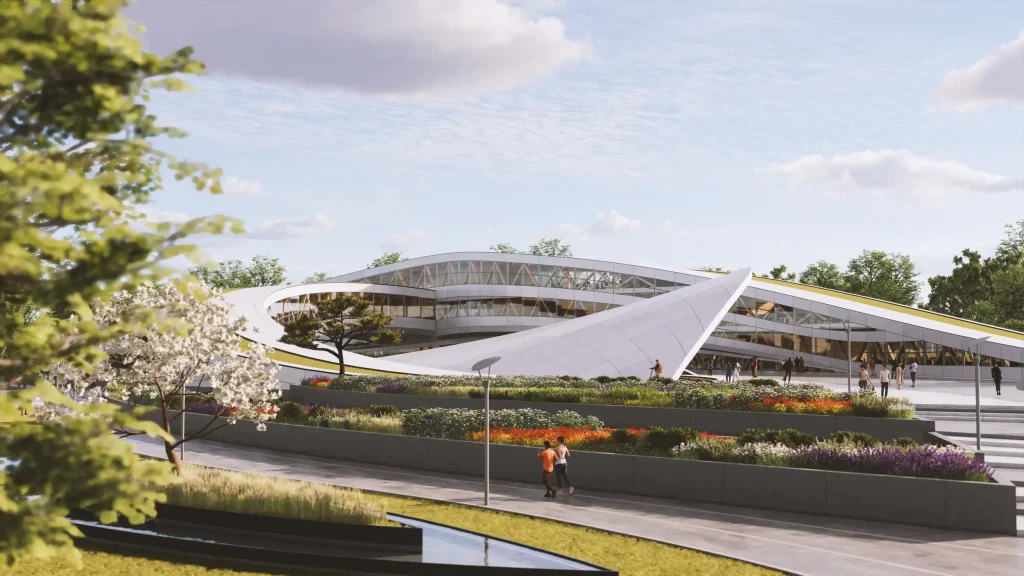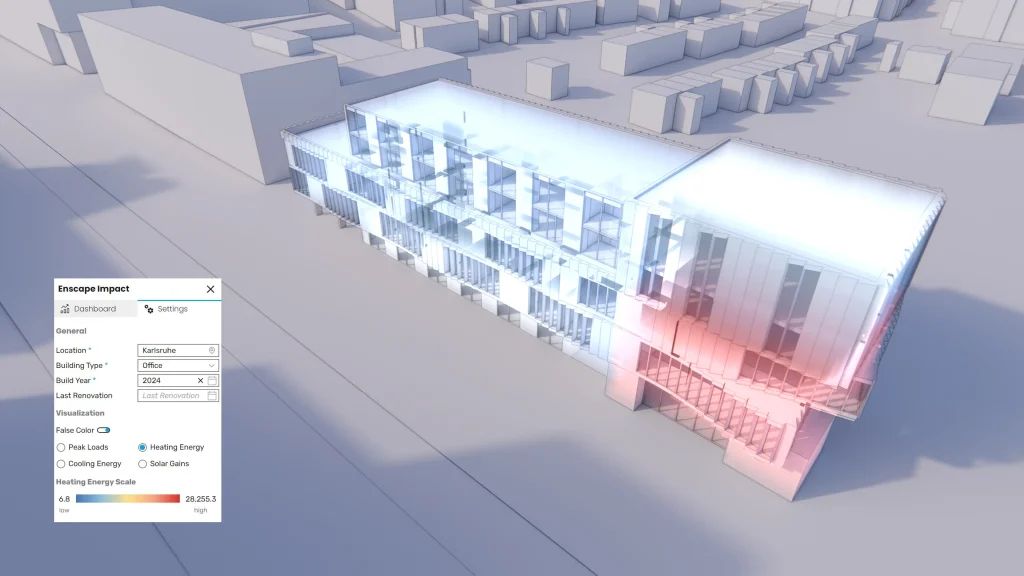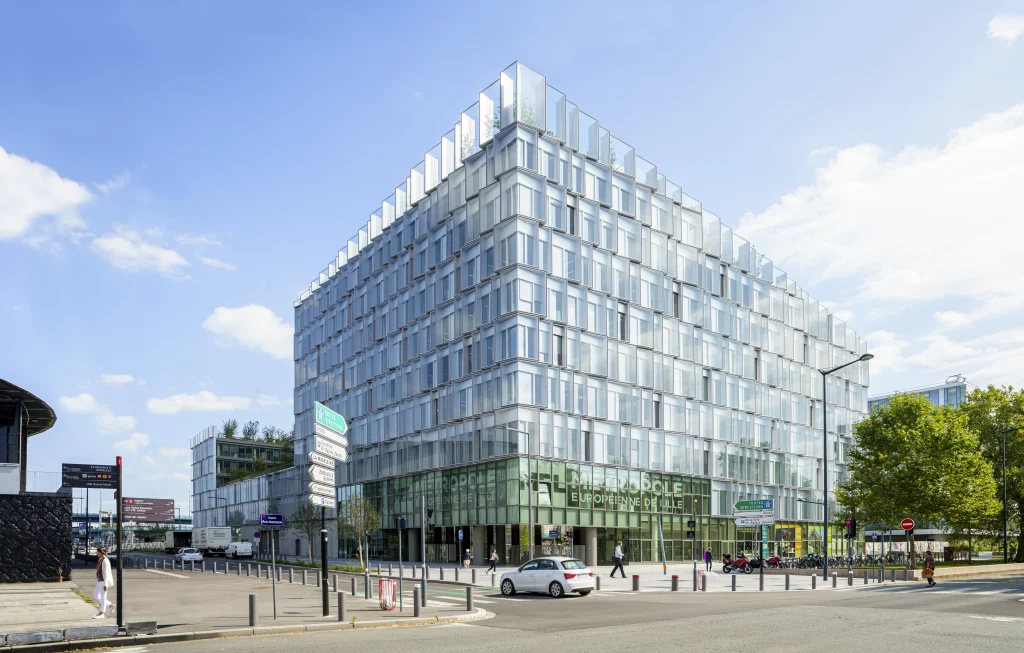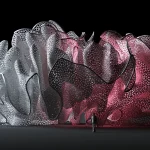Green architecture is an approach to design and construction that prioritizes environmental responsibility, resource efficiency, and the well-being of occupants. Also known as sustainable architecture, it involves designing buildings that promote healthy living spaces and reduce negative environmental impacts.
The built environment contributes heavily to worldwide energy consumption, water use, and CO2 emissions, leaving a substantial carbon footprint. With growing environmental awareness and a focus on sustainability for the future, green architecture could be the solution for creating a sustainable future for both buildings and people.
5 benefits of green architecture
Green architecture aims to promote eco-friendly practices and healthy energy consumption. It encourages architects to leverage technology to create innovative structures that minimize negative impacts on the ecosystem. There are many advantages to this approach, including the following:
1. Environmental benefits
Residential and commercial buildings currently account for nearly 40% of carbon emissions in the United States. Additionally, new construction depends significantly on natural resources, including wood, stone, metal, and water, intensifying its environmental impact.
Green buildings, however, are designed to consume less energy, incorporate sustainable materials, and reduce waste. Some can even have a net-positive impact on the environment by generating their own energy and enhancing water resources. Compared to traditional buildings, LEED-certified structures produce 50% fewer greenhouse gas emissions.
2. Economic efficiency
Green buildings can lower maintenance costs by 20% compared to conventional structures. Additionally, investing in green retrofits can reduce annual operating costs by as much as 10%. These cost savings result from reduced waste, improved energy efficiency, and increased durability.
3. Increased asset value
With growing demand for sustainable living, green buildings are valued 16% higher at resale than traditional structures. They also experience higher occupancy rates, leading to greater rental income for owners, which helps to balance out the higher initial costs of adding eco-friendly features to construction projects.
4. Better occupant well-being
Embracing sustainable building practices leads to better indoor air and water quality, positively impacting residents’ health and overall well-being. In green commercial buildings, a high-quality indoor environment can also boost employee productivity, enhancing concentration and focus.
5. Aesthetic appeal
Green architecture often has a vibrant, lush look, standing out against the gray, muted tones of urban buildings. Some eco-friendly properties even incorporate natural elements, such as plant-covered walls and vine-covered edges, bringing a refreshing aesthetic to the structure.
Adding more plants in and around buildings can also aid in faster recovery rates. Studies have found that hospitals with green infrastructure can improve recovery times by 15% and lower secondary infection rates by 11%.
Reducing environmental impact through technology
Technology plays an important role in green architecture, making sustainable solutions more accessible, efficient, and effective. Here are examples of technologies that help to reduce environmental impact while improving the comfort and well-being of building occupants.
Real-time rendering solutions
Real-time rendering allows architects to see how the sun’s angle affects a building’s natural light, enabling them to make modifications to optimize daylight usage. This lets architects assess the building’s orientation, shading, and window positioning to maximize natural light intake and reduce the need for artificial lighting, thereby saving energy.
Building performance analysis
Building performance tools provide fast energy modeling simulation for the early stages of design, allowing architects to evaluate their building’s sustainability earlier. Key performance metrics such as peak cooling and heating loads can be calculated and compared to make data-driven design decisions.
Renewable energy sources
Energy options such as solar panels and geothermal systems provide buildings with a reliable source of clean energy. These renewable options make buildings more sustainable, lower operations costs and can lead to savings of up to $2,500 per year for households. They contribute to environmental goals by reducing reliance on fossil fuels and minimizing greenhouse gas emissions.
Green roofs
A green roof is a roofing system that is fully or partially covered with vegetation. It offers benefits like better insulation, noise reduction, and improved air quality. Green roofs also help to reduce stormwater runoff, preventing erosion and sewer overflows. Commonly found in urban areas, they contribute to greener and more sustainable cityscapes.
Smart glass
Smart glass is a type of glass that can alter its light transmission properties based on environmental conditions or user controls. This improves occupant comfort and enhances building aesthetics and functionality. Incorporating it in windows, doors, and skylights can lower a building’s energy consumption by 20%, positioning it as a key innovation in green architecture.
An example of green architecture
Biotope is an urban sanctuary of green wellness for the European Medicines Agency in the heart of Lille, France. Designed by French architecture and visualization agency KeurK and Danish architecture firm Henning Larsen, the goal was to create a space that reflected health and renewal.
Natural light, fresh air, and greenery were prioritized in the design process, as evident by the building’s layout. It has a sunlight-filled atrium, a courtyard garden lined with open-air balconies, and a terraced green roof.
Paving the way for sustainable living
Green architecture isn’t just a trend—it’s an essential step toward a sustainable future where buildings contribute positively to the planet and enhance the quality of life for their occupants. It offers a path forward in addressing the environmental challenges posed by traditional building practices. By embracing sustainable design and construction, we can create healthier living and working environments.
Enscape Impact is an add-on to Enscape, a real-time visualization plugin designed to seamlessly integrate real-time rendering with building performance metrics. It allows architects to generate fast energy analysis from the same model used for visualizing projects, providing fast and efficient design iterations. Try it for free today to see how it can transform your architectural workflow.





















Leave a comment